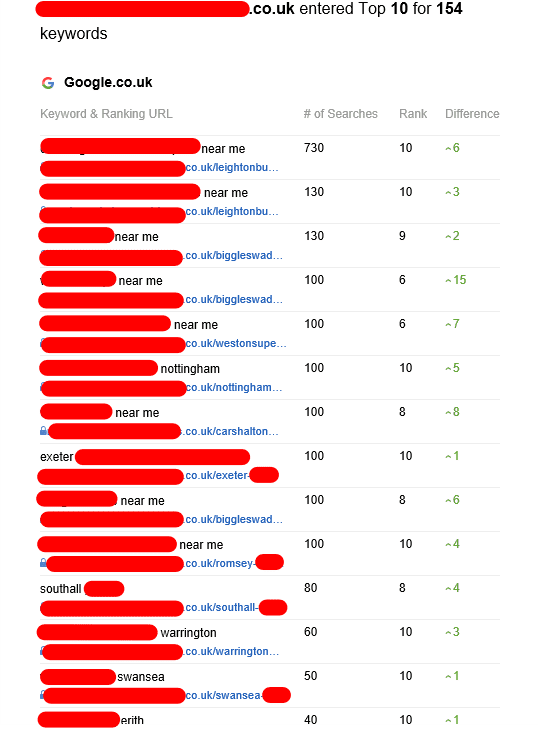A Step-By Step Guide To Tiered Backlinks

Tiered Backlinks Service
Tiered backlinks are a powerful tool in any SEO strategy. They can aid in building a strong profile of backlinks without attracting penalties from search engines. tier backlinks is important to learn how to use them properly.
Tier two backlinks are from sources that are moderately reliable, such as directories, blogs, or article networks. At this point the quality and relevance of backlinks are ignored in favor of the quantity.

First Tier
Tiered link building is an SEO strategy that assists in establish a high-quality backlink profile for your website. It does this by replicating what happens when highly authoritative content is distributed across the internet. This is accomplished through a network or pages that endorse a main resource and then redirecting their link juice to a promoted page. With this method you can generate large numbers of links without degrading the quality of your site's content.
Tier 1 links are the highest quality links that you can get through tiered backlinks services and should only be posted on reputable websites with relevance to your industry. They should also have high authority on the domain. This is the most important part of your tiered linking campaign and is often difficult to. Tools such as Moz, Ahrefs, SEMrush or Loganix DA Checker to verify the domain credibility of potential donors for your Tier 1 links.
The next step in tiered link creation is Tier 2. Tier 2 links are less powerful than the links in Tier 1 however they still can boost your search engine ranking. You can build Tier 2 links using blog comments, forum posts and Wikis. This strategy should only be used when it's not contrary to rules. Also, avoid automating.
Second Tier
It is possible to increase the quality and quantity of your backlinks profile using the"tier" system. This will not result in penalties from search engines. However, it can be a significant time-consuming process. Tiered link building involves linking to multiple pages on a site. This is a lot of work. It can take months to see the results of a tiered link-building campaign. This is due to the fact that PageRank requires a long period of time to pass onto the destination web page.
The first tier must be made up of high-quality, dofollow hyperlinks that originate from relevant websites that have high Domain Authority (DA). The benefit of a tier-one backlink is in this level. It is vital to use a trusted domain authority checker like Moz, Ahrefs, SEMrush, or Loganix to verify the quality of your tier-one links.
You can use social media profiles, un-spammed Q&A websites, and blog networks. This could include profiles on social media, un-spammed blogs, and Q&A sites. networks. Certain SEO practitioners use automated link building tools to achieve this goal.
It is vital that the links you get for your Tier 2 appear natural. Google's Webmaster Guidelines state that if the link appears to be fake, it could be flagged as spam and penalized accordingly. This could result in a dramatic drop in ranking or a manual intervention from Google's reviewers.
Third Tier
Link building in tiers is a fantastic way to boost your site's authority. This enables you to maximize the benefits of links that aren't high-quality and reduce the risk of being penalized. The method also increases the effectiveness of your SEO efforts by allowing you acquire links at a lower price. However tiered link building is not without its drawbacks. It can be risky if you utilize too many low-quality backlinks and when the links aren't contextually relevant to your site. It is also important to be careful not to go overboard with the number of tiered links, as Google will be aware and could penalize your site.
Tier 2 links are typically less reliable than tier one backlinks. They are designed to increase the domain authority of the original backlinks. These links can be obtained via blog comments, forums or wikis, as well as other Web 2.0 sources. This level of backlinks is sometimes referred to as "pumping tiers." However, it is crucial to ensure that your Tier 2 links are of high quality and relevant.
Utilizing too many automated tools for building Tier 3 links may violate Google's Webmaster guidelines and result in an administrative action. Many optimizers utilize GSA, Xrumer, and ZennoPoster to automate their Tier 3 link creation. Tier 3 links need to be crafted from credible websites and reputable niches. If they are not, Google will detect them as part of an ad-hoc link scheme and punish the site.
Fourth Tier
Tiered link building can be utilized to boost the authority of a site and its SEO ranking. It is important to adhere to Google's guidelines when implementing this strategy. If you create Tier 3 backlinks on low-quality or spammy websites for instance, it could result in your website losing rankings. Additionally, if you create links at a rate that isn't natural, this can also raise flags for Google and lead to penalties.
To avoid this, focus on building a variety of tier-one backlinks that are sourced from reputable sources. It is possible to include links from the first stage in guest posts and roundups of links and article directories. You can also make use of tier 2 links to boost your backlinks from tier one. This is because Tier two backlinks tend to be superior to tier three links.
It's also important to keep in mind that building tiered links requires a lot of work and money. You'll have to pay for automated tools and content writers, for example. In addition, you'll need to keep track of all the different levels to ensure that your campaign is consistent and effective. If you're unable dedicate the time and resources needed to implement this strategy, it's recommended to outsource the task to an agency that is specialized in tiered link development.
